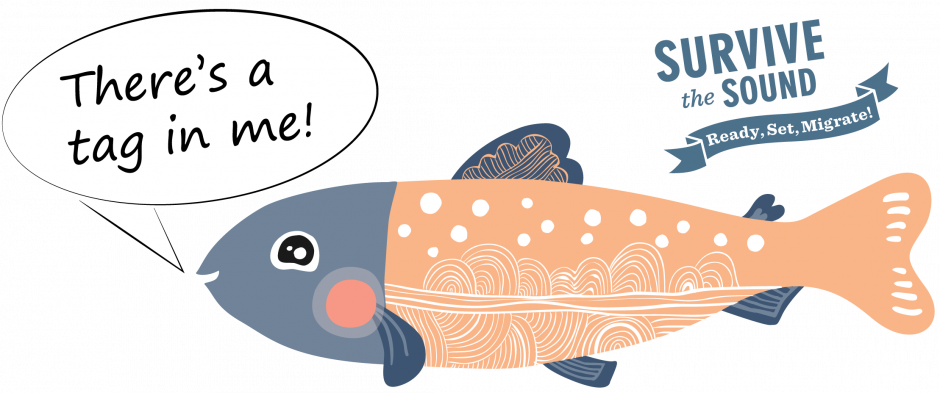

“Survive the Sound” allows you and your students to digitally experience the great migration of salmonids (chinook, coho and steelhead) as they make their way through Puget Sound to the Pacific Ocean. As an educator, your class can use this gamified experience that sources real data to observe and track them as they fight the odds of survival.. Should you choose, your class can even sponsor real fish through donations to a US based non-profit.


Not every class can have access to live salmon in the classroom to study their life cycle, but through Survive the Sound they can engage with the real-world and watch the “bigger picture” of living things interacting and responding to their environment. Even for students who have the privilege of raising salmon in the classroom, this provides an extension and peek into the world their little fry will one day hopefully inhabit. Students can hypothesize what might happen to their fish, view the environmental and human impact on migrations, and even learn about and demonstrate the probability of a steelhead’s survival.
Survive the sound supports BC Curriculum Big Ideas related to the interaction of organisms with their environment. From the Grade 3 Big Idea, “Living things are diverse, can be grouped, and interact in their ecosystems,” to the Grade 7 Big Idea, “Evolution by natural selection provides an explanation for the diversity and survival of living things.”
***AS A CLASS, I recommend focusing on the educational impact of this difficult migration and less on the competitive side since the odds are not in the salmons’ favour. Students might make predictions of what might have happened to their fish, tell the first-person perspective as the fish, thoughtfully engage with the continued life cycle or impact that the greater environment has from a fish passing.
Some possible inquiry questions: How does this one fish support a food web? How do commercial fishing or fish farms impact the migration of that fish? What advantages or disadvantages does this fish have over other species or groups that migrate? What is our motivation for supporting/saving salmon?
*of interest: Survive the Sound is sponsored by local indigenous groups in Puget Sound.

Teachers should visit the classroom page to sign up and create a team for free.
There are 3 ways to get involved:
- Sponsor a fish and individually
- If you simply have a favorite steelhead (or 5 favorite steelhead) you want to support and follow, this is the best way. Click on your favorite fish at SurvivetheSound.org, click “pick me,” and scroll to the bottom to click the continue button.
- Join a team
- This is the least costly way to get the Survive the Sound experience. The only catch is, you don’t get to pick a fish unless you reach the team’s next $25 fundraising milestone. To join a team, go to SurvivetheSound.org, scroll down to the “Join a Team” section, find the team you want to contribute to and click “join.”
- Create a team
- This is the option that allows you to create your own team name and invite others to contribute. Go to SurvivetheSound.org, scroll down to the “Join a Team” section, and click “Create a Team.” Then pick a “captain fish” to represent your team and specify a name. After you check out, you can invite your friends to join by clicking “invite friends.”
NOW WHAT?
Visit Stream to Sea or https://www.salmonidsintheclassroom.ca/ for BC resources and information about raising salmon in your own classroom.
Use the Educational Resources provided by Survive the Sound or get creative with how you want students to engage with this platform. Many of the resources focus on American Geography so you will have to adapt it to create British Columbia relevant materials. The list below is an example of the resources available:
- Puget Sound’s Place in the Salish Sea and Salmon and Steelhead 101
- Watersheds
- Food Webs
- Steelhead and Salmon Survival
- Stewardship


